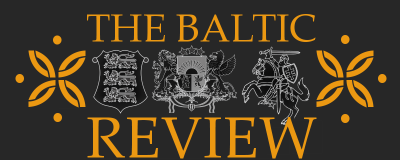Among the many communities that have called Lithuania home, the Karaites and Tatars stand out as two vibrant and distinct groups that have made significant contributions to the country’s culture and heritage. Despite their relatively small numbers, the Karaites and Tatars have left a lasting impact on Lithuanian society, enriching it with their unique customs, languages, and traditions.
The Karaites

The Karaites, a Turkic-speaking ethnic group, are perhaps one of Lithuania’s most intriguing communities. They are best known for their adherence to Karaite Judaism, a unique branch of Judaism with roots in the Middle East, particularly in Babylonia. The Karaites have maintained their distinct religious and cultural practices for centuries, making them a fascinating presence in Lithuania.
The history of the Karaites in Lithuania can be traced back to the 14th century when they were invited by the Grand Duke Vytautas the Great to settle in the town of Trakai, near Vilnius. Here, they were tasked with serving as the duke’s bodyguards and, over time, became an integral part of Lithuanian society. Today, Trakai remains the cultural centre of the Karaites in Lithuania, with its iconic Karaite wooden houses and the Karaite Kenesa, a place of worship for the community.

One of the most distinctive aspects of Karaite culture is their cuisine, which features dishes like kibinai, a savory pastry filled with meat or vegetables, and balandėliai, cabbage rolls. These dishes have become beloved staples in Lithuanian cuisine and are often found in restaurants throughout the country.
While the Karaites have maintained their religious practices and traditions, they have also embraced the Lithuanian language and culture. This cultural exchange has not only enriched Lithuanian society but has also allowed the Karaites to preserve their identity in a foreign land.
A very interesting fact about Karaites is that this community speaks a very distinctive form of Turkic language in the Lithuanian (Trakai) dialect, which has less than 100 speakers in the whole world and as a result of relative isolation from foreign influences, the language is considered to be more archaic than modern Turkic languages.
For more extensive information about Karaite customs and culture, please visit a link below to a dedicated museum in Trakai:
https://trakaimuziejus.lt/s-sapsalo-karaimu-tautos-muziejus/
The Tatars

The Tatars, another minority group in Lithuania, also have their roots in the nomadic Turkic-speaking people of the Eurasian steppes. They first arrived in the Grand Duchy of Lithuania in the 14th century, primarily as warriors invited to serve in the Lithuanian army. Over time, the Tatars have become an integral part of Lithuania’s multicultural fabric, contributing to the country’s military history and cultural diversity.
One of the most notable Tatar contributions to Lithuania is their military prowess. Tatar warriors played a crucial role in defending the Grand Duchy of Lithuania against external threats. They were known for their exceptional horsemanship and combat skills, which earned them a respected place in Lithuanian history.
Despite their martial origins, the Tatars have also made significant contributions to the cultural identity of Lithuania. They have preserved their own language, known as Crimean Tatar, and their Islamic faith while also embracing Lithuanian customs and traditions. The Tatar cuisine, with dishes like kibinai (shared with the Karaites) and pilaf, has become part of the culinary mosaic of Lithuania.
One of the most iconic Tatar sites in Lithuania is the Tatar Mosque in Kunas, a beautiful and historically significant place of worship. This mosque serves as a symbol of the Tatar community’s enduring presence in Lithuania and their commitment to their faith.

There is an old Tatar saying “Don’t knock on other people’s gates, they won’t knock on yours either”.
For more information about Tatars in Lithuania, please visit two dedicated museums:
The Karaites and Tatars in Lithuania may be small in number, but their impact on Lithuanian society is significant. These two colourful and culturally rich communities have added depth and diversity to the country’s cultural heritage. Through their cuisine, architecture, and religious practices, the Karaites and Tatars have left an indelible mark on Lithuania.
In an increasingly globalised world, the preservation of unique cultural identities is crucial. Lithuania’s embrace of the Karaites and Tatars is a living testimony to the country’s commitment to diversity and multiculturalism. As Lithuania continues to evolve, it is essential to celebrate and honour the contributions of these two remarkable communities that have helped shape the nation’s history and identity. The Karaites and Tatars serve as a reminder that a nation’s richness lies not only in its majority culture but also in the colourful threads woven by its minority communities.



























Comments